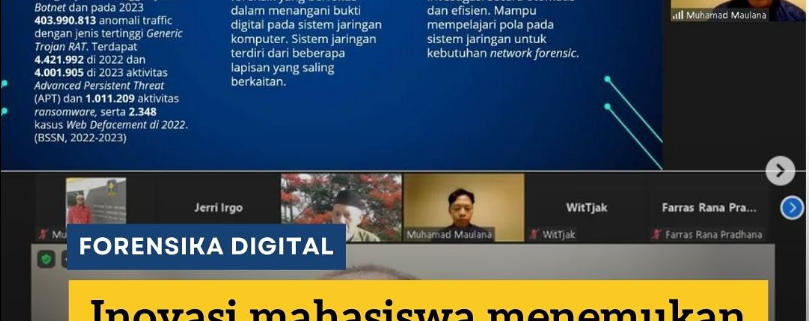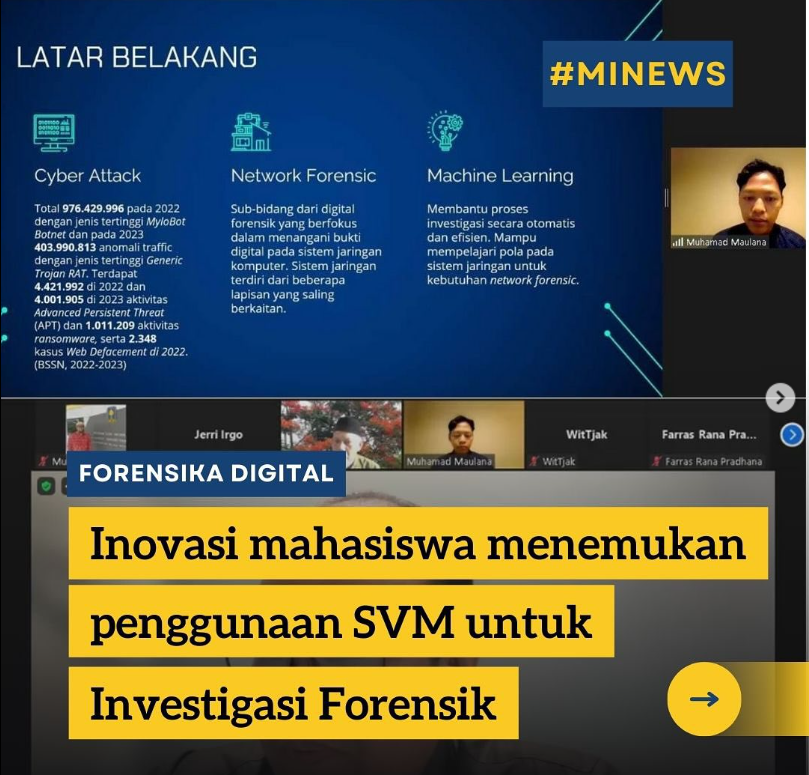Harnessing Machine Learning to Overcome Challenges in Digital Forensics
The rapid pace of technological development brings numerous benefits but also significant challenges, particularly in the form of digital crimes. In an era where digital platforms are integral to daily life, individuals must exercise caution while interacting online. One key challenge in combating digital crimes lies in managing digital evidence, which requires a procedural and scientific approach.
Challenges in Digital Evidence Management
Handling digital evidence, especially in network systems, is a daunting task due to the sheer volume and unstructured nature of data. These issues can significantly hinder the investigation process. To address these challenges, advanced technological solutions are imperative.
“Machine learning plays a critical role here, as its collaborative nature can improve investigation efficiency, particularly in analyzing network data,” explained Muhamad Maulana, an alumnus of the Digital Forensics concentration from the Master’s Program in Informatics at UII, on Friday (June 21).
Machine Learning for Network Attack Classification
Maulana’s research focuses on classifying attack types within network systems using machine learning, specifically the Support Vector Machine (SVM) algorithm with the RBF kernel. The choice of SVM was motivated by its high classification accuracy and ability to handle non-linear datasets with multiple features.
“I aim to provide recommendations for network forensic practitioners through this research,” Maulana shared.
His findings underscore the importance of adhering to standard procedures, such as using frameworks like NIST, ADAM, IDFIF, and other forensic models. Investigations should also align with organizational policies to ensure consistency.
Role of Machine Learning in Data Analysis
The diversity of digital evidence demands clarity on which data should be investigated. Machine learning significantly enhances data analysis by improving the quality, speed, and accuracy of the process.
Previously, semi-automated data analysis methods utilized specialized frameworks for data extraction. In contrast to conventional techniques, machine learning enables model-based processing. Investigators no longer need to manually sift through data, as the machine learning model, trained on specific datasets, can automatically identify patterns in test data.
For example, conventional tools like Wireshark require investigators to manually inspect each frame of data. Semi-automated tools provide visual representations but are limited to specific cases. Machine learning, however, builds adaptable models that streamline the analysis of various scenarios.
Insights on SVM Accuracy for Attack Detection
Maulana’s research revealed high SVM accuracy in classifying DDoS and XSS attacks. However, its performance in detecting SQL injection attacks was less satisfactory. The recall for detecting SQL injection attacks was only 0.06, meaning the model identified just 6% of actual SQL injection incidents.
This discrepancy arises from factors such as class imbalance, feature selection, and the variability of SQL injection attack types. For instance, the model demonstrated a precision of 0.64 in identifying instances without SQL injection attacks, highlighting its limitations.
Despite these challenges, Maulana’s research emphasizes the potential of machine learning to revolutionize digital investigations while outlining areas for further improvement.
References
- https://kedu.suaramerdeka.com/pendidikan/2112958439/mahasiswa-fti-uii-teliti-penggunaan-support-vector-machine-untuk-investigasi-forensik-jaringan
- https://www.instagram.com/p/C9MA_MmSxjJ/
[/FA]





